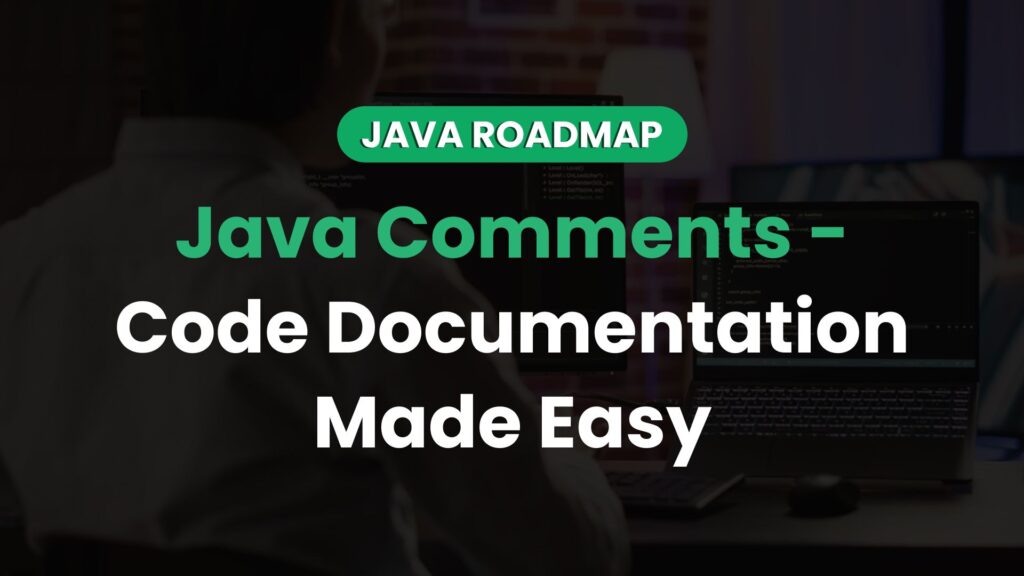Introduction To Java Comments
In Java, comments are used to add explanatory notes or annotations within the code that are ignored by the compiler. Comments are primarily meant for developers to provide information, document code, and improve code readability. They serve as a form of communication within the codebase and can be used for various purposes. Here’s an explanation of the types of comments in Java, their uses, and some real-life examples:
- Single-line comments: These comments begin with two forward slashes (//) and extend to the end of the line. They are used for short, single-line explanations.
- // Java Variables: This is a single-line comment explaining the purpose of the following code int age = 25; // Initializing the variable ‘age’ with a value of 25
- Multi-line comments: These comments start with a forward slash followed by an asterisk (/) and end with an asterisk followed by a forward slash (/). They are used for longer comments spanning multiple lines.
- /* This is a multi-line comment that provides a detailed description of the function or section of code. It can be used to explain the logic, expected input/output, or any other relevant information. */ int result = calculateResult();
- // Invoke the calculateResult() function
- Documentation comments: These comments, also known as Javadoc comments, are used to generate API documentation. They are written using the same syntax as multi-line comments
- /** * This class represents a Person object. * It contains methods to set and get the person’s name and age.
- */ public class Person { // … }
Comments Are Useful For Several Reasons:
- Code explanation: Comments provide insights into the purpose, functionality, or logic behind a particular piece of code. They make the code more understandable for other developers who may need to read or modify it in the future.
- Code documentation: Comments serve as documentation that can be read and understood by other developers. They explain how different components of the code work, their expected behaviour, and any special considerations.
- Code debugging: Comments can be used to temporarily disable or “comment out” sections of code for debugging purposes. This allows you to isolate specific code segments without deleting them entirely.
- Collaboration: When working on a team, comments facilitate collaboration and communication between team members. They can share insights, instructions, or suggestions within the code, making it easier for others to understand and work with.
Here’s a real-life example showcasing the use of comments in Java:
// Calculate the total cost of items in the shopping cart
double totalCost = 0;
for (Item item : shoppingCart) {
// Calculate the individual item's cost
double itemCost = item.getPrice() * item.getQuantity();
// Add the item's cost to the total cost
totalCost += itemCost;
}
// Print the total cost
System.out.println("Total cost: $" + totalCost);
In the example above, comments are used to explain the purpose of the code, the calculations being performed, and the final output. This helps other developers understand the intention behind the code and its expected outcome.
Conclusion
Remember, comments should be used judiciously, focusing on providing valuable information without over-commenting or stating the obvious. Clear and concise comments will greatly enhance code maintainability and readability.

